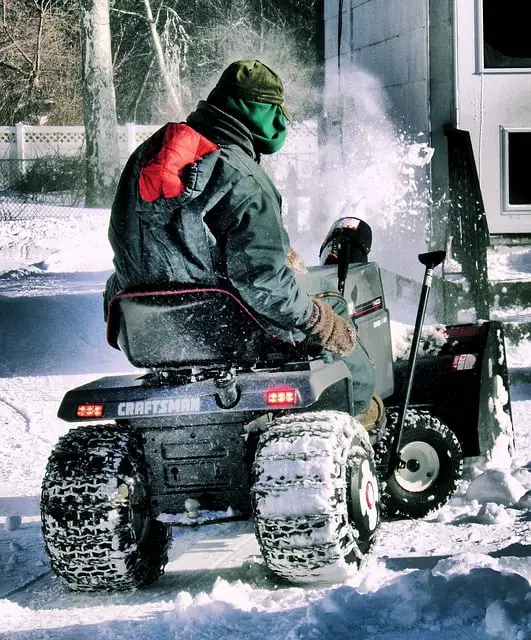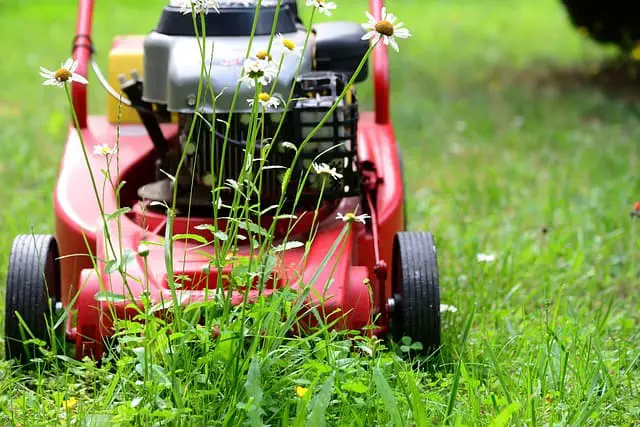When you see “hydrostatic” as a featured selling point for a riding lawn mower, this refers to the transmission. Also known as and similar to an automatic transmission, these allow for greater speed variability. Plus, it gives a smooth transition between gears.
This is the most common type of transmission found in riding lawn mowers. It used to be that manual transmissions reigned supreme. But recent decades changed all that. Hydrostatic transmissions are easy to care for and maintain while giving a simple user experience with optimal responsiveness.
What Is the Importance of a Transmission for a Riding Lawn Mower?
When you hear someone talk about a transmission in a riding lawn mower, they’re essentially referring to how the machine handles speed. This is the most essential part of a mower’s ability to function. It ensures the mower has the right amount of power, or torque, to handle difficult conditions and situations.
Because of this, riding lawn mowers are best for things like wet grass, muddy landscapes and steep hills up to 15°. It can also handle maneuvering around obstacles such as stones, tree roots, tree trunks, tight corners and others.
Higher gears give less traction, but go much faster than the lower gears. But, different types of transmissions provide varying gear reduction ratios as well as the number of available gears.
How Does a Hydrostatic Transmission Work in a Riding Lawn Mower?
Hydrostatic transmissions found in riding lawn mowers work by using hydraulic fluid to shift gears. This is similar to an automatic transmission that you find in a vehicle. But, it’s the fluid that transfers power from the engine into the wheels rather than belts.
Hydrostatic actually refers to the pump and motors. The pump utilizes pressurized oil to help push the pistons in the drive system. This is what powers the hydrostatic motors to move energy into the drive wheels on the riding mower.
Are Hydrostatic Transmissions in Riding Lawn Mowers Better than a Manual Transmission?
Whether a hydrostatic is better than a manual in a riding lawn mower will mostly rely on what you will use your mower for. If all you’re doing is cutting the grass and like the act of shifting gears yourself, then a manual will be more ideal. However, if you plan on hauling and snow blowing with the mower, then hydrostatic will be best.
Are Hydrostatic Transmissions More Expensive than Manual Transmissions?
Hydrostatic transmissions are definitely more expensive than manual ones. They have far more components with the added intricacy of its design and complicated engineering. This also means that they are more expensive to fix. So, it’s advisable for owners to take care of their transmissions and stay on top of its upkeep.
What Are the Advantages of a Hydrostatic Transmission in a Riding Lawn Mower?
There are several advantages to using a hydrostatic transmission in a riding lawn mower. It provides reverse rotation capabilities and variable speed controls along with self-overload protection and dynamic breaking. The speed controls are a particular highlight, which allows users to mow under a wide range of speeds.
In some models, such transmissions provide cruise control which can be useful for many acres of mowing flat land. They maneuver well and give a good response time, especially compared to that of manual transmissions.
It gives a high power-to-weight ratio, providing for a faster and smoother riding lawn mower experience. These offer more power and greater acceleration than with manual transmissions. All this equates to a long-lasting transmission that needs little to no maintenance.
Is It Easy for Hydrostatic Transmissions to Wear Out?
One aspect to hydrostatic transmissions is their relief valves. This means you can damage them if you work them beyond what their design intends. So, if you’re hard on your riding lawn mower, it will cause the transmission to wear out faster than it would otherwise.
Also, lack of proper maintenance and care will cause the transmission to wear out sooner than it should. The filters and oil must be clean. This means you should check and change these, along with other components, around every 500 hours or so. In other words, about once per season.
What Other Disadvantages Are There to Hydrostatic Transmissions on Riding Lawn Mowers?
Aside from potential wear-and-tear issues, there are other problems owners should take note of. It’s crucial to employ meticulousness with the care and maintenance of a hydrostatic transmission. You have to check things like hoses, fittings and filters on a routine basis. Anything that goes awry can result in expensive repairs.
The other disadvantage is simply how much more expensive they are in general. You will pay at least ¼ to ½ more for a riding mower with a hydrostatic transmission than you will for a manual one. Plus, it tends to be less efficient than manual or variable-speed transmissions. This means the powerful motor will consume more fuel than other types.
Who Manufactures Hydrostatic Transmissions for Riding Lawn Mowers?
There are many producers of hydrostatic transmissions. But the ones most commonly found in riding lawn mowers are those by Hydro-Gear Transmissions or Tuff Torq Transmissions.
What Other Types of Transmissions Can be in Riding Lawn Mowers?
Aside from manual and hydrostatic transmissions, there are a couple others you might find in a riding lawnmower. Consider the following:
- Friction-Disc Transmissions: These have a spinning disc with a movable wheel on top. In the same way as a record player, the wheel traverses the disc from the center. This gives a range of torque and speed but often require maintenance. Many users reports some jerkiness while operating the gears.
- Continuous Variable Transmissions (CVT): These have a band of metal between two cone-like pulleys and alter their diameter along with their gear ratios. After revving the engine, there’s a “rubber band” sensation with a delay in power getting to the wheels. However, these offer the best gear ratio for the demand of power in a riding lawn mower.
Hi, I’m John Stephens, chief editor and writer for Totalgardener.com. I’ve been gardening and raising animals for over 15 years starting with a small backyard plot in Northern Virginia where I grew corn, potatoes, squash, and using a high mulch technique called the Ruth Stout Method. I also raised ducks and small mammals for meat and eggs in a movable pen similar to the ones used by Joel Salatin. I later moved to Colorado where I experimented with growing greens using aquaponics inside. I eventually added a microgreens setup and home sprouting operation. I’m excited to share everything I’ve learned plus more from the other local gardening and animal raising experts I know.



